As I have shot a lot of film in my subminiature cameras over the past few months, it seemed timely to write a short summary of a few aspects of using them not covered in the posts about the individual cameras. Coming to the end of the 100ft-roll of
Kodak WL Surveillance film, I bought a similar-looking box of
Photo Instrumentation Film SO-078. This film was double-perforation, although I thought it was single when I bought it, the 'SP' on the box label clearly refers to something else. There was very little information online regarding the film (the seller had stated it to be 500 ISO); one obscure reference I did find was in a report from a NASA conference on atmospheric electricity where it was described as "a 400 ASA T-grain emulsion". As the film's SO number designates, this is a 'special order' film, which may mean that the emulsion itself could be the same as Kodak's TMAX 400 coated on a particular base and format. My first test showed that metering for 200 gave fuller negatives: exposed at 400 the negatives are thin, but the film is 12 years past its develop before date.
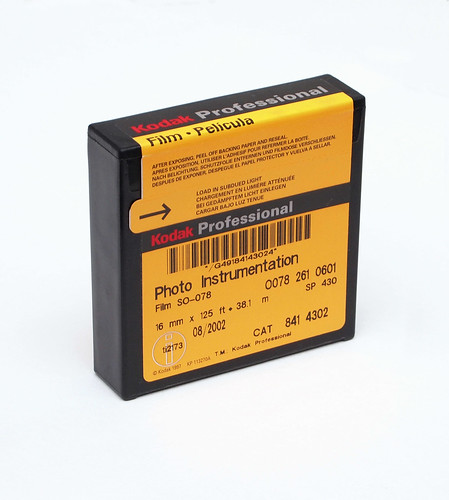 |
| Kodak 16mm Photo Instrumentation Film SO-078 |
Having got 30 images from my first test roll using the
Mamiya-16 Automatic, as against the 20 frames that the camera's cassettes are designed to be loaded with, I suspected that the Photo Instrumentation film was a little thinner that the surveillance film I've used previously. The box contains 125ft/38.1m of film on the same metal spool that usually contains 100ft. I shot the film at a range of exposure indexes, stand developing in Ilfotec LC29 at 1:100, and, as mentioned above, found rating it around 200 gave the best results.
 |
| Kodak Photo Instrumentation film SO-078 test roll |
Having perforations on both sides of the film, with the Mamiya-16 Automatic the lower holes were just on the edge of the bottom of the frame, if perfectly centred, although the scan of the film above shows the frames tilted on the film, which means the perforations occasionally intrude further into the image area. Scanning the negatives shows the Photo Instrumentation film as being fairly grainy, although as I have mentioned on other posts about the subminiature format, prints made in the darkroom would give a better representation of the film's qualities.
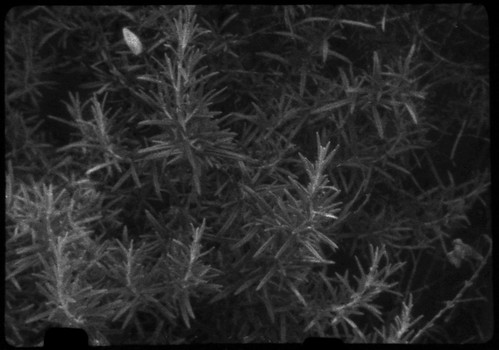 |
| Kodak Photo Instrumentation Film SO-078 test shot, rated 400 EI |
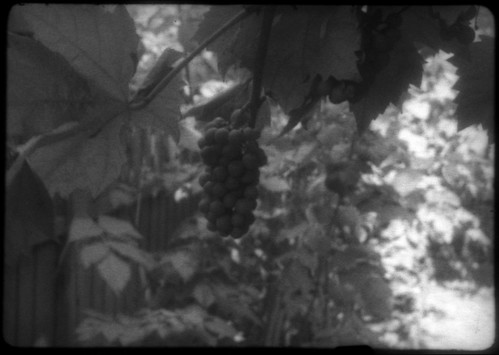 |
| Kodak Photo Instrumentation Film SO-078 test shot, rated 200 EI |
I also shot the film with the
Kiev-30M, where the camera's larger frame size meant that the sprocket holes appeared at both top and bottom of the image. Depending on the subject matter, this can be more or less distracting, as in the examples shown below.
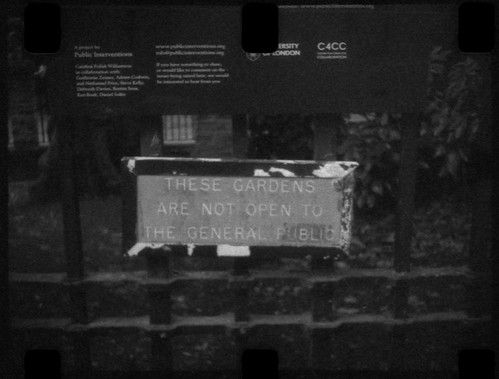 |
| Kiev-30M with Kodak Photo Instrumentation Film SO-078 |
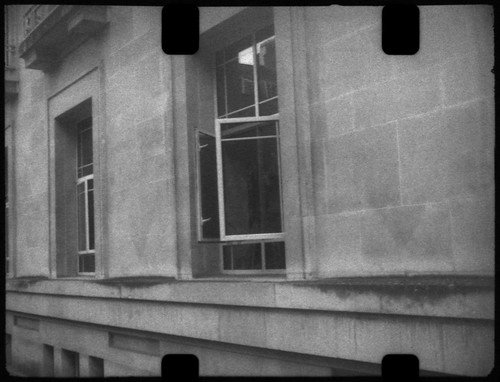 |
| Kiev-30M with Kodak Photo Instrumentation Film SO-078 |
Although a number of different emulsions are still made in 16mm (and there is always the option of cutting film down to fit the format), one of the problems confronting the contemporary user of subminiature cameras is the scarcity of the propriety cassettes. Those made for the Kiev series of subminiature cameras appear to be most common, having been produced until around 1990. I found a cheap online seller of these, and, having bought ten cassettes, I decided to modify a couple to use with my Mamiya-16 Automatic. I already had
two original metal cassettes, as well as a later plastic two-chambered one. The metal cassettes are designed to fit both sides of the camera, and, being identical, each contain the spool used to advance or wind on the film. As the spool in the supply-side chamber is redundant, I cut the supply chamber from a couple of the plastic Kiev cassettes to feed the metal ones, as these were small enough to fit the Mamiya-16 Automatic. This now means that I can load three cassettes for the Mamiya camera, rather than just the two. I also cut an old yellow gelatin filter to fit the Mamiya-16 Automatic's filter holder as a substitute for the missing glass filter. As referred to im my post about the
Minolta 16 QT, it's very handy having the filter built-in to the camera rather than an additional accessory to carry around.
 |
| Cut down Kiev cassette (left), with single Mamiya cassette |
For about a year I had been developing 16mm film from the various subminiature cameras by taping it, emulsion side out, to 35mm film and loading it onto a normal Paterson reel. This hasn't been always consistent, and I have had problems with the 16mm film not being held taut enough against the 35mm for the developer to adeqautely reach the emulsion surface. Frequently, the tape would come off the film in its hour-long immersion when stand developed, with the usual result of having to fix the film loose. As my use of 16mm film has increased over the past few months, the solution to developing the films was a tank or reels that would actually fit 16mm, having only used Paterson tanks and reels for years. I found a very cheap 'universal' developing tank from the former Soviet Union, which uses reel ends separated by spacers which can be changed in their configuration to hold 35mm, medium format, or, as in the image below, 16mm, with an arrangement that can develop two films at the same time. The reels do not have ball bearings to drive the film around the spirals, so it requires a little more care when loading, but it's a useful addition to my darkroom equipment.
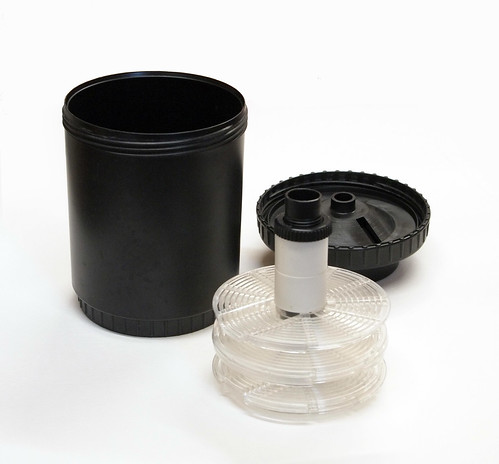 |
| Universal Developing Tank, with reels in the 16mm configuration |








Excellent. I have a 16 automatic, and your piece inspired me to search or reeks and film.
ReplyDeleteI have 450 feet of this film and have finally gotten around to load it into some 110 cartridges. it is a good 20 years out of date so I'm hoping that the 100 ISO my Pocket Instamatic 60 is geared for.
ReplyDelete